fuckass art notes ch53
1/18
There's no tags or description
Looks like no tags are added yet.
Name | Mastery | Learn | Test | Matching | Spaced |
|---|
No study sessions yet.
19 Terms
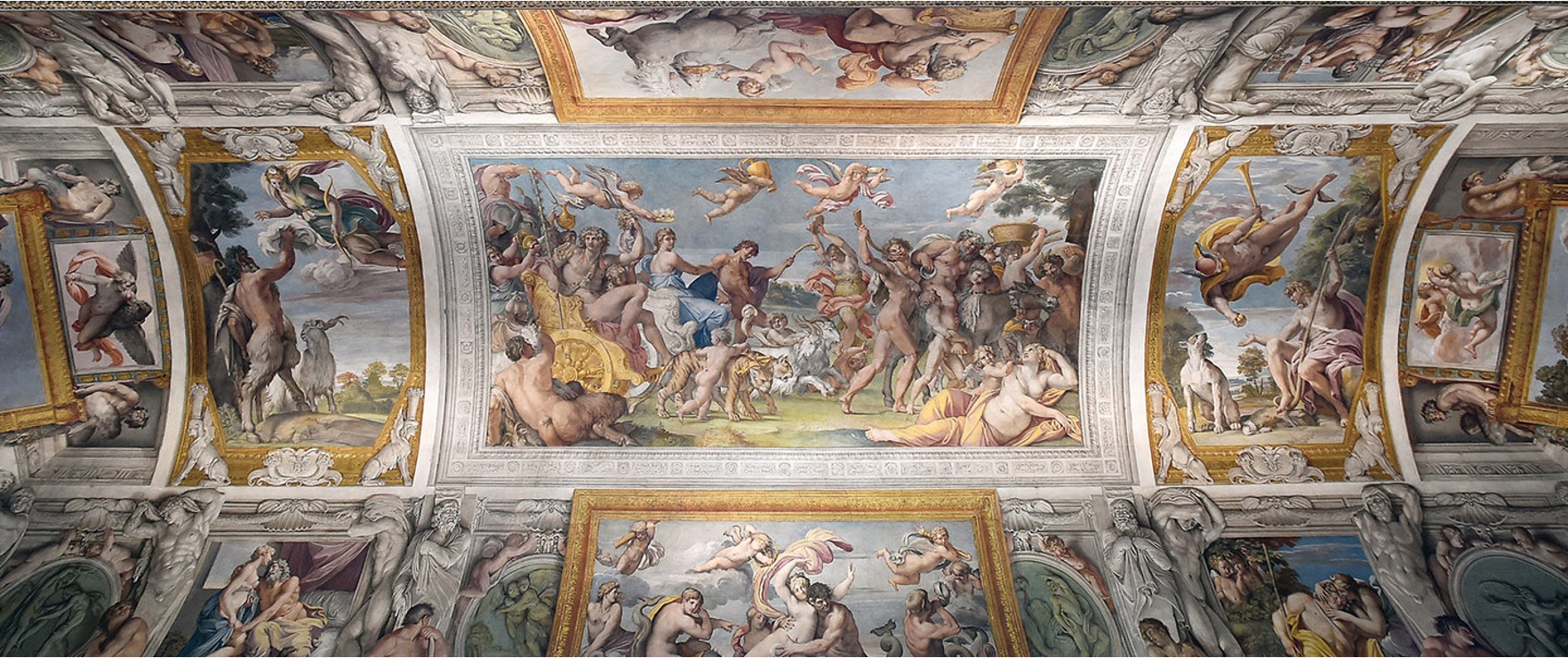
Annibale and Agostino Carracci, The Loves of the Gods,gallery of the Farnese Palace, Rome, 1597–1600. Fresco, 66 ft. × 21 ft. 6 in. (20.18 × 6.55 m).
•Image combines the exuberance of Mannerism and the tradition of the Classical ignudi (idealized male figures)
•Quadratura intermingles painting, sculpture, and architecture, but through the imagery, positions painting as the superior illusionistic art
Baroque Classicism imagery includes a myriad of references to antiquity
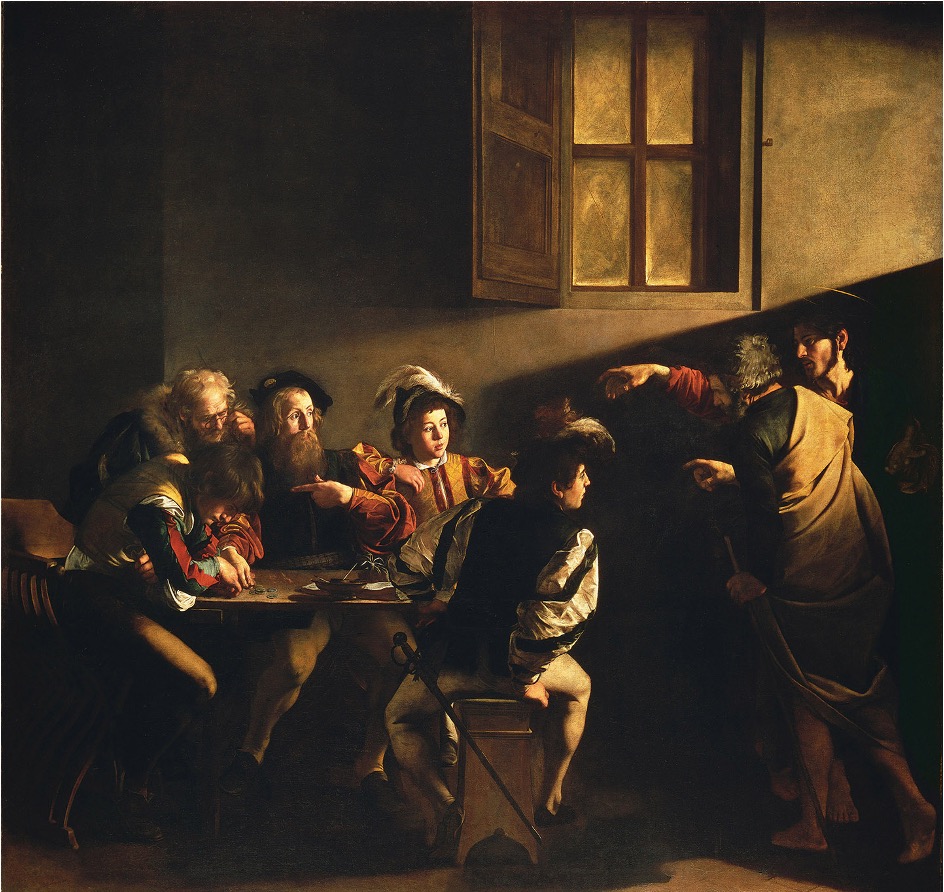
Michelangelo Merisi da Caravaggio, The Calling of St Matthew, 1599–1600. Oil on canvas, 10 ft. 6 in. × 10 ft. 9 in. (3.2 × 3.28 m). San Luigi dei Francesci, Contarelli Chapel, Rome.
•An example of Baroque naturalism
•It is based on the dramatic use of light and line, and a vividly realistic treatment of the subject
•Visual ambiguity allows the viewer to interpret the image subjectively
•Christ’s outstretched hand mimics Adam’s hand in the Sistine Chapel ceiling
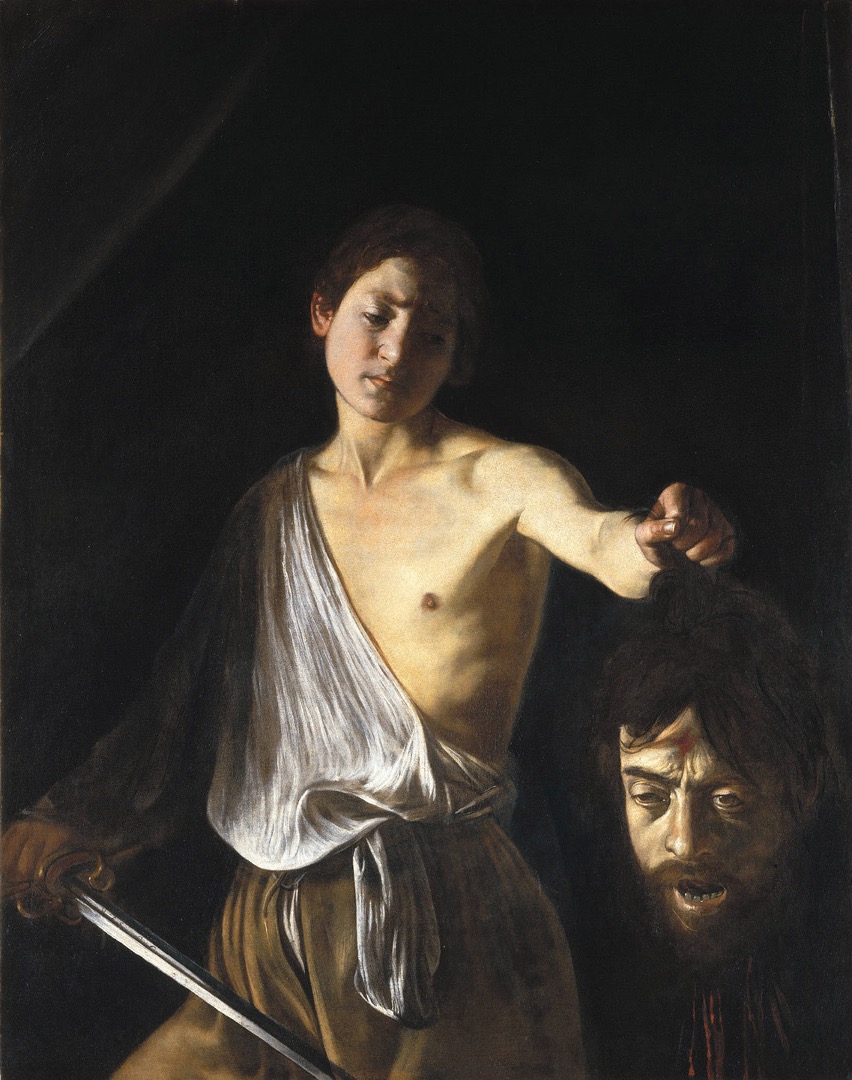
Michelangelo Merisi da Caravaggio, David with the Head of Goliath, 1609–10. Oil on canvas, 49⅛ × 39¾ in. (1.25 × 1.01 m). Galleria Borghese, Rome.
•Conveys the artist’s personal guilt and asks for mercy
•Goliath is a self-portrait of Caravaggio
•Sword inscription: humilitas occiditsuperbiam
•Innovative in its focus on characters as individuals with psychological depth and emotional resonance
•1606–Caravaggio fled Rome after murdering Ranuccio Tomassoni in an armed brawl. As part of his plan to beg for the Pope’s pardon, he probably gave this painting to the Pope’s nephew, Cardinal Scipione Borghese
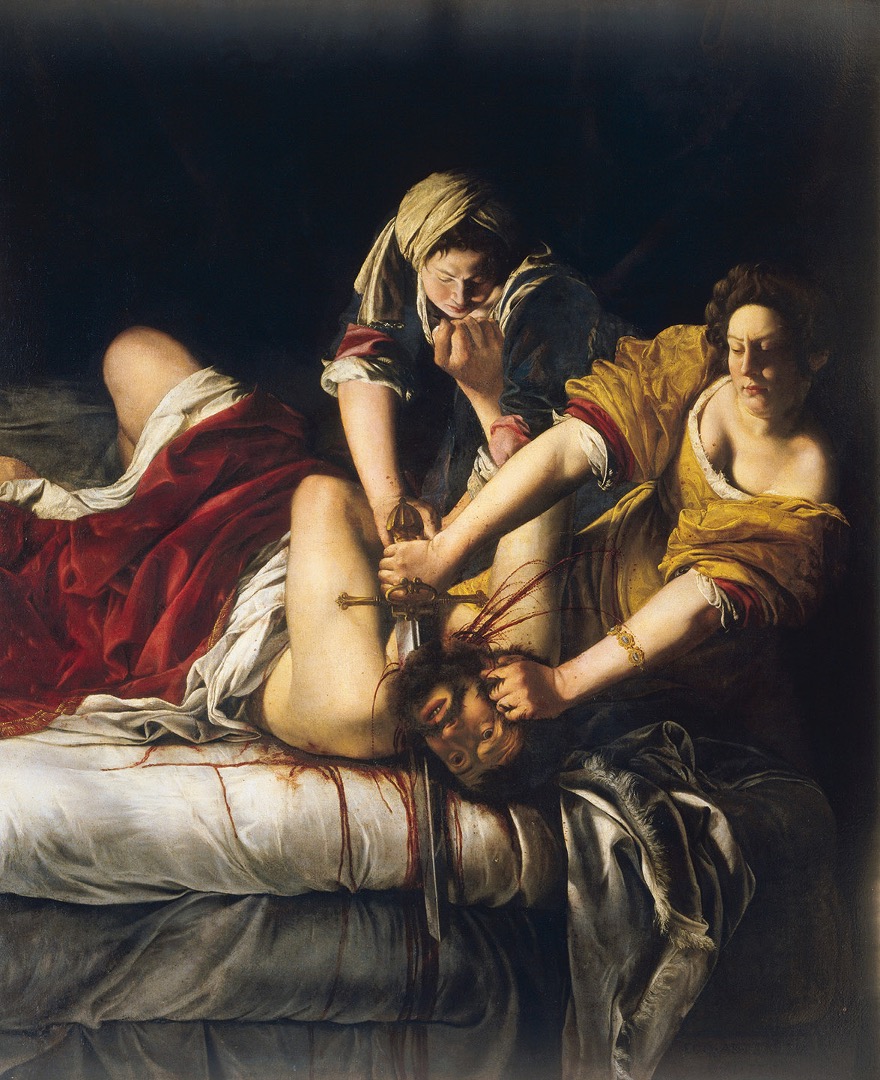
Artemisia Gentileschi, Judith Slaying Holofernes, c. 1620. Oil on canvas, 4 ft. 9¾ in. × 3 ft. 6⅝ in. (1.47 × 1.08 m). Galleria degliUffizi, Florence, Italy
•Gentileschi was a Caravaggisti who emulated Caravaggio’s dramatic, naturalistic approach to create a heightened scene of drama
•A Deuterocanonical scene infused with contemporary knowledge (e.g., the incorporation of the parabola shape of the arcs of blood that spew from Holofernes’ neck)
•Scene of empowered women
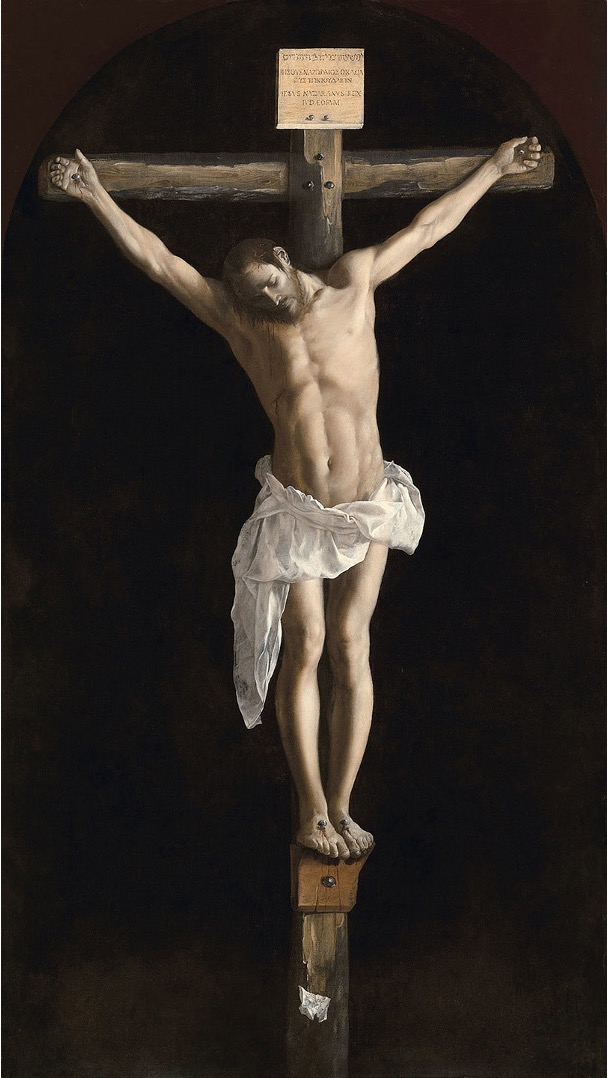
Francisco de Zurbarán, Christ on the Cross, 1627. Oil on canvas, 9 ft. 6⅜ in. × 5 ft. 5¼ in. (2.9 × 1.66 m). Art Institute of Chicago, Illinois.
•In Spain, works of art served as devotional objects and reinforced Catholic theological reforms
•Utilizes tenebrism, but removes narrative detail to ensure the viewer’s exclusive focus on the crucifixion
•Visual illusionism is used to amplify Christ’s suffering and sacrifice
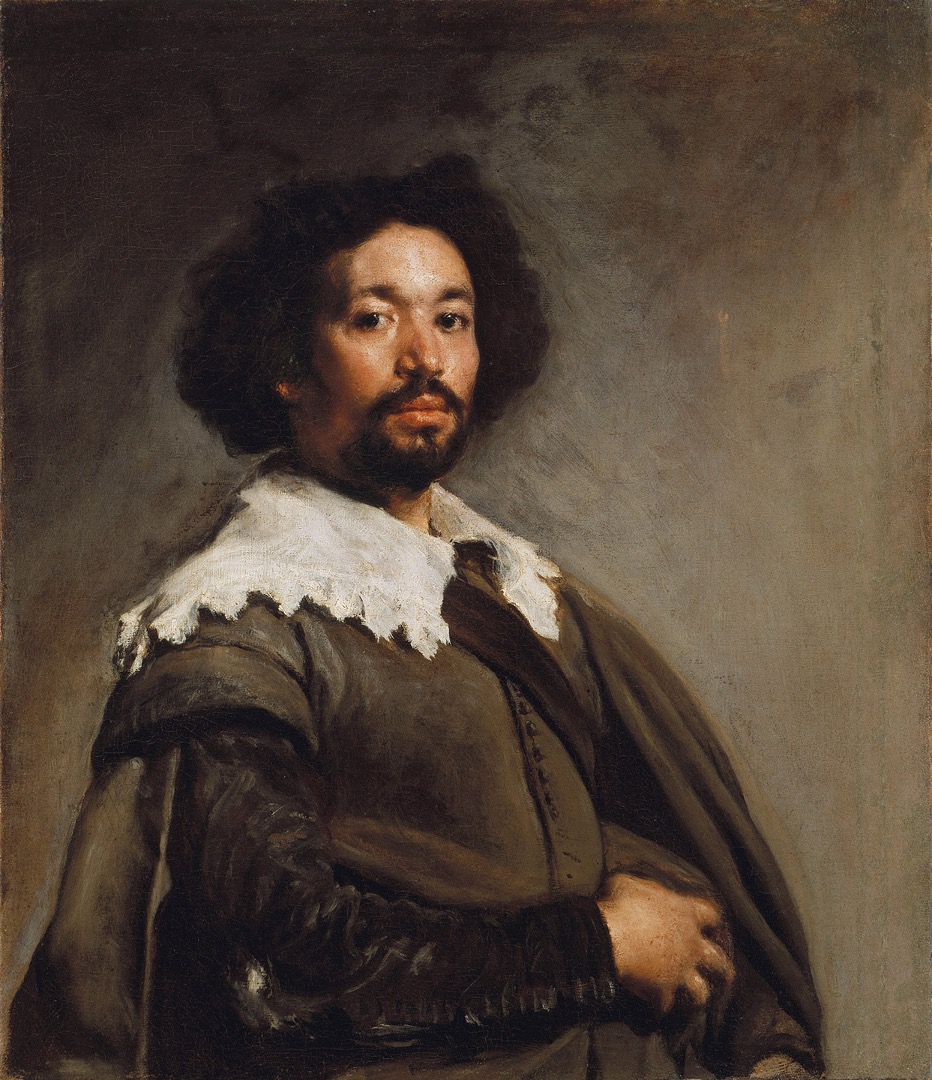
Diego Velázquez, Juan de Pareja, 1650. Oil on canvas, 32 × 27½ in. (81.3 × 69.9 cm). Metropolitan Museum of Art, New York
•The sitter is of Spanish and North African descent who was enslaved to Velázquez and was considered an unusual subject
•Intimacy of the sitter’s gaze and stance create a connection between the sitter and the viewer
•Combination of loose brushstrokes and extreme precision created an immediacy that other painters recognized as “truth”
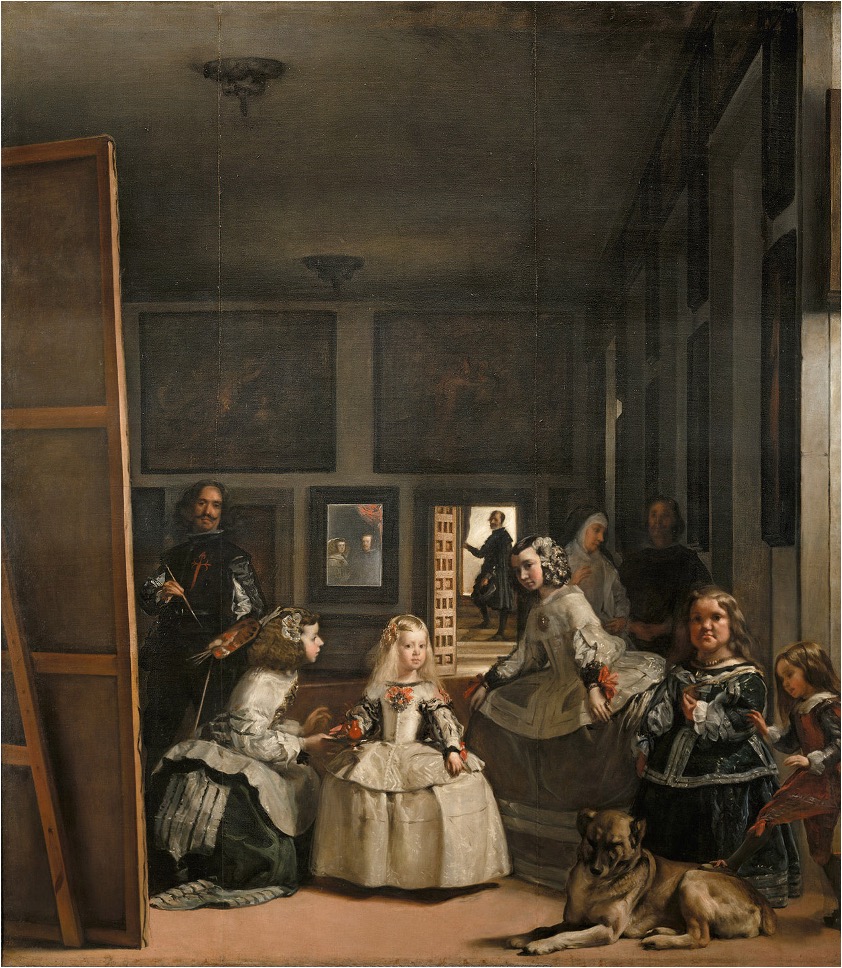
Diego Velázquez, Las Meninas (The Maids of Honor), 1656. Oil on canvas, 10 ft. 5⅛ in. × 9 ft. ½ in. (3.18 × 2.76 m). Museo Nacional del Prado, Madrid
•Embraces a sense of ambiguity and captures a sense of reality that reflects on the nature of illusionism
•Features portraits of a variety of members of the royal household, including the artist himself, in a relatively informal manner
•The true subject matter of the image remains unclear, as this is an artist’s self-portrait, a group portrait, and a genre scene
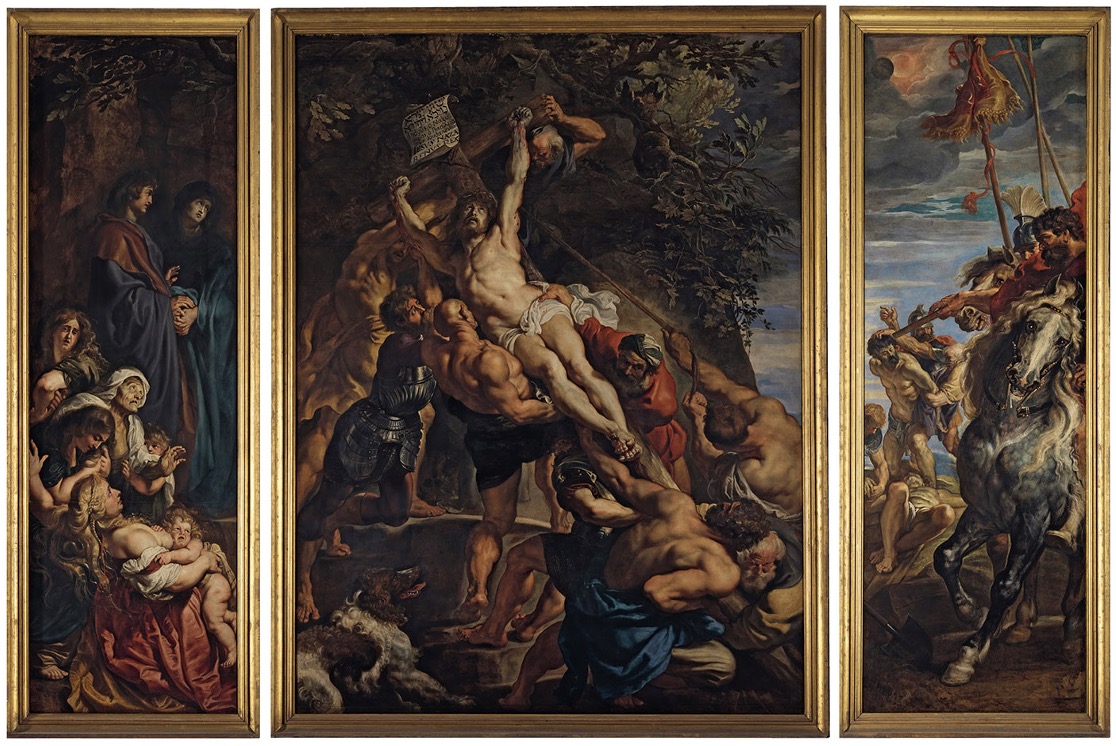
Peter Paul Rubens, The Elevation of the Cross, from the Church of St. Walburga, 1610–11. Oil on wood, 11 ft. 1 in. × 15 ft. 1⅞ in. (3.38 × 4.62 m). Now in Antwerp Cathedral, Belgium
•Baroque dynamism is seen here through foreshortened figures, diagonal lines, and V-shaped space
•Features many details derived from the Gospels, and adheres to Catholic Reformation ideals of lifelike, historically accurate subjects that inspire the viewer
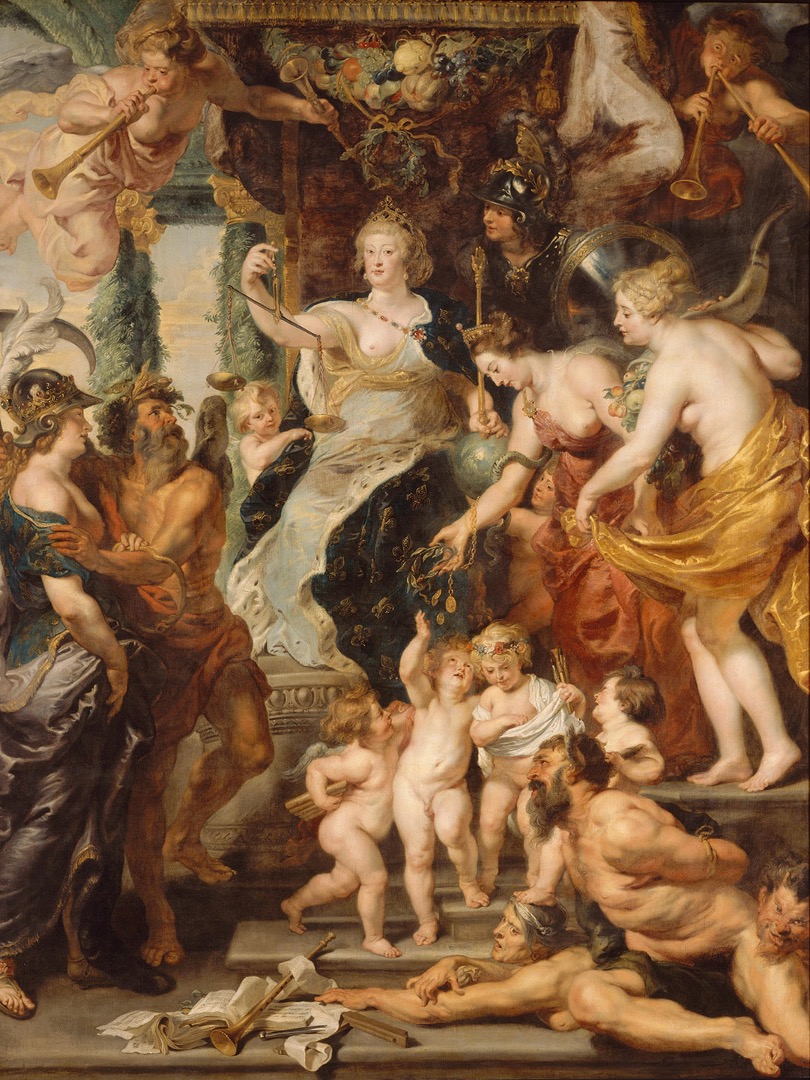
Peter Paul Rubens, The Felicity of the Regency, 1625. Oil on canvas, 12 ft. 11½ in. × 9 ft. 7 in. (3.95 × 2.92 m). Musée du Louvre, Paris.
•One of twenty-four paintings from The Medici Cycle that depict the life of Marie de’ Medici, queen of France
•Features a myriad of iconographic and allegorical images that communicate the queen’s political authority
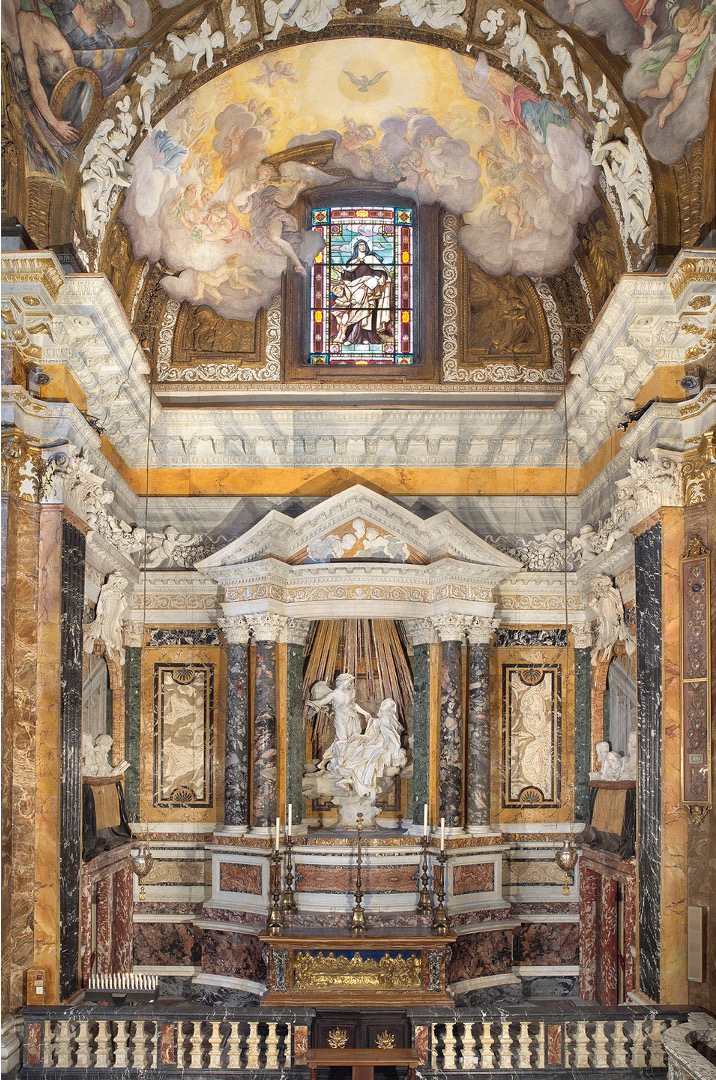
Gian Lorenzo Bernini, Cornaro Chapel with The Ecstasy of St. Teresa, Santa Maria della Vittoria, Rome, 1647–52.
•Dynamic, dramatic, and emotional multimedia work
•Members of the Cornaro family flank either side of the altar in theater boxes, further emphasizing the theatricality of the chapel
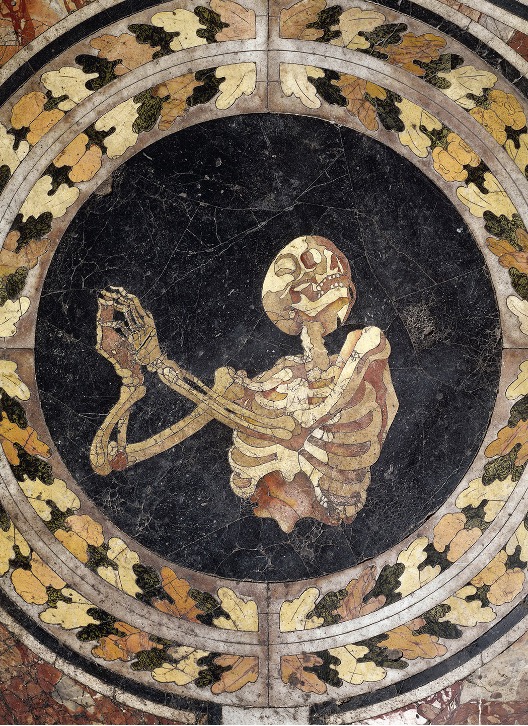
Gian Lorenzo Bernini, roundels in the floor of the CornaroChapel, Santa Maria della Vittoria, Rome, 1647–52.
•The roundels connect the heavenly realm to the earthly (and subterranean) realm, as the images denote the Cornarofamily tomb below
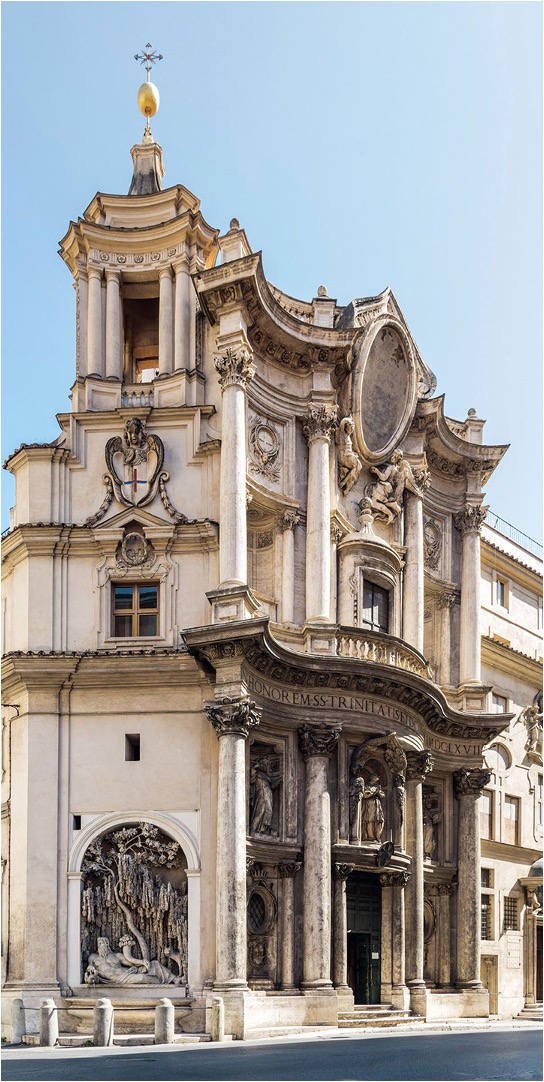
Francesco Borromini, exterior of San Carlo alle Quattro Fontane, Rome, 1665–67
•This sculptural facade incorporated a pre-existing fountain and a bay system of undulating curves
•The push and pull of Classical architectural elements creates an animated effect
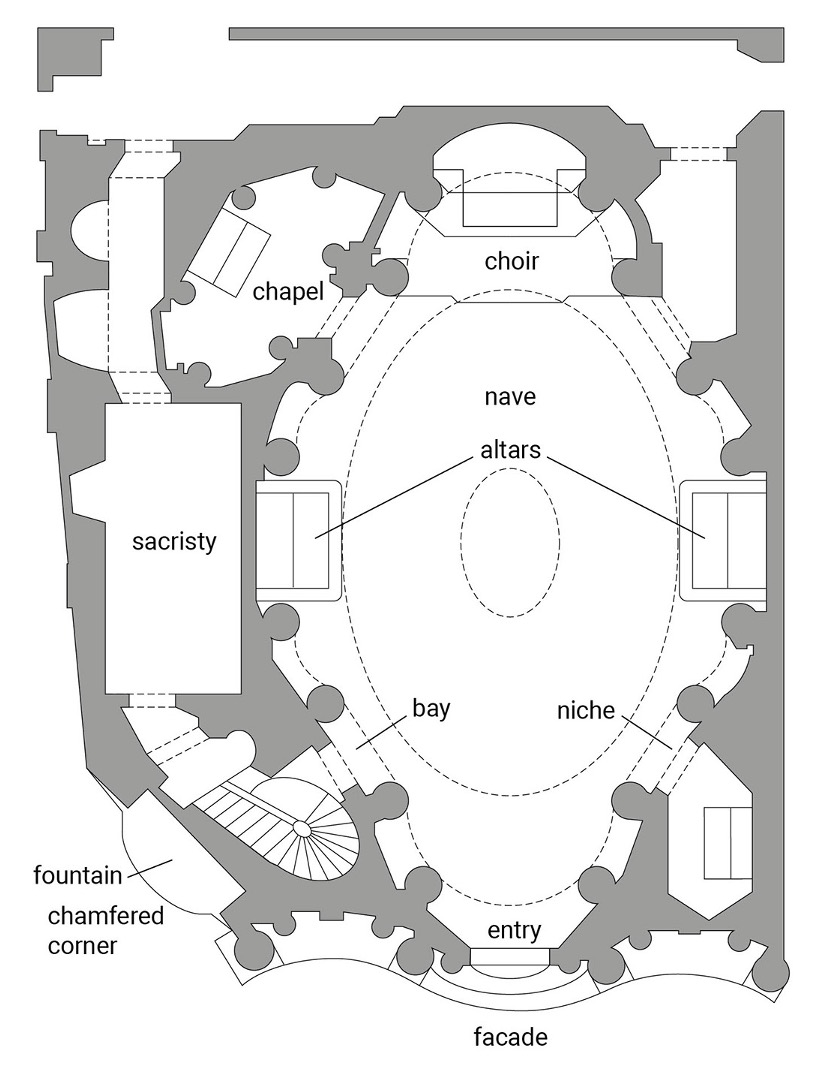
Plan of the church of San Carlo alle Quattro Fontane, Rome. Dotted lines indicate the positions of the ceiling dome and lantern.
ts is a floor layout bruh ion know
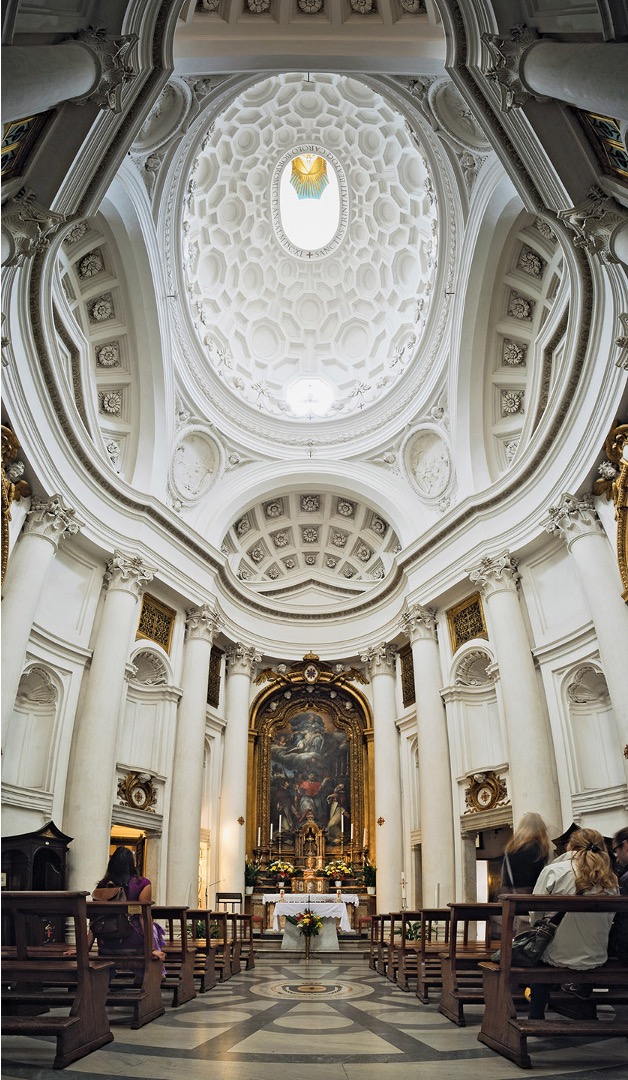
Francesco Borromini, interior of San Carlo alle Quattro Fontane, Rome, 1638–41.
•Undulating effects repeated in the interior give the impression of architecture in motion
•The dome is ornamented with various geometric forms that include illusions to make the dome appear larger than it is
•The interior and facade feature representations that underline the ideology of the Catholic Reformation
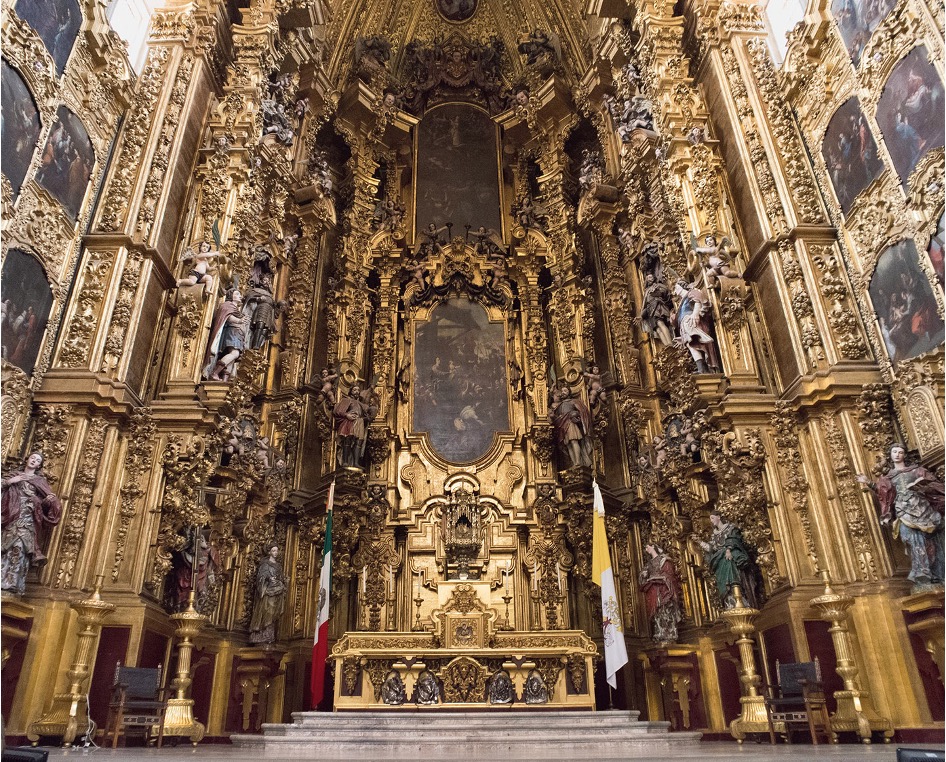
Jerónimo de Balbás, Altar of the Kings, Metropolitan Cathedral, Mexico City, 1718–37.
•The opulent and innovative Ultra-Baroque style was popular in Spain and colonial Latin America
•The altar glorifies the Church and its rulers through the inclusion of Christian royalty and extensive use of gold, sourced from the Americas
•The altar expresses the power and intended glory of the missionary Catholic Church during the colonial era and celebrates the Spanish rulers
•Woodworking took seven years, 12 years to gild it
•Immediately following the War of Mexican Independence (1810–21), the ashes of the fallen heroes of the revolution were interred in a vault directly under the Altar of the Kings, and the Metropolitan Cathedral became a symbol of Mexican sovereignty. This symbol of colonial dominance was thus appropriated as a site of colonial resistance
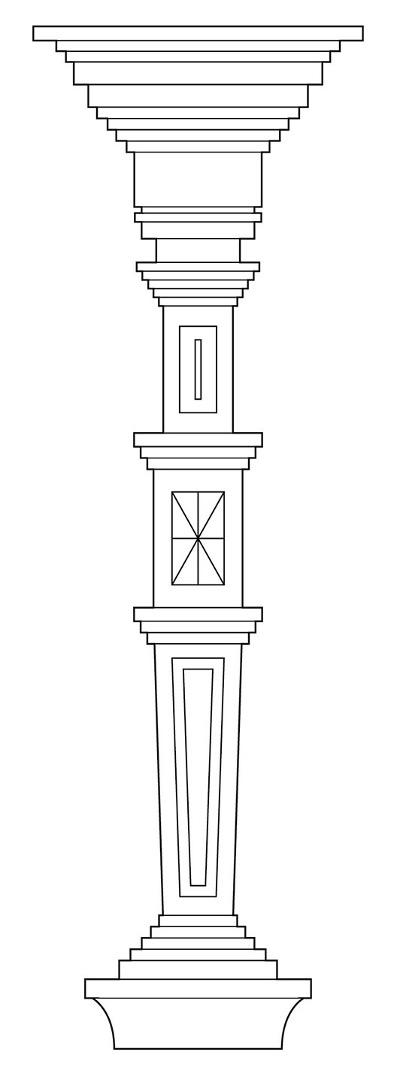
An estípite column.
•The overwhelming visual effect of Balbás’ Altar of the Kings is aided by the use of the estípitecolumn
•These allow for profuse ornamentation on the entire surface of the column
•The inverted pyramid form puts the weight of the column at the top, creating a visually dynamic space
•Proportions reflect ideal male body
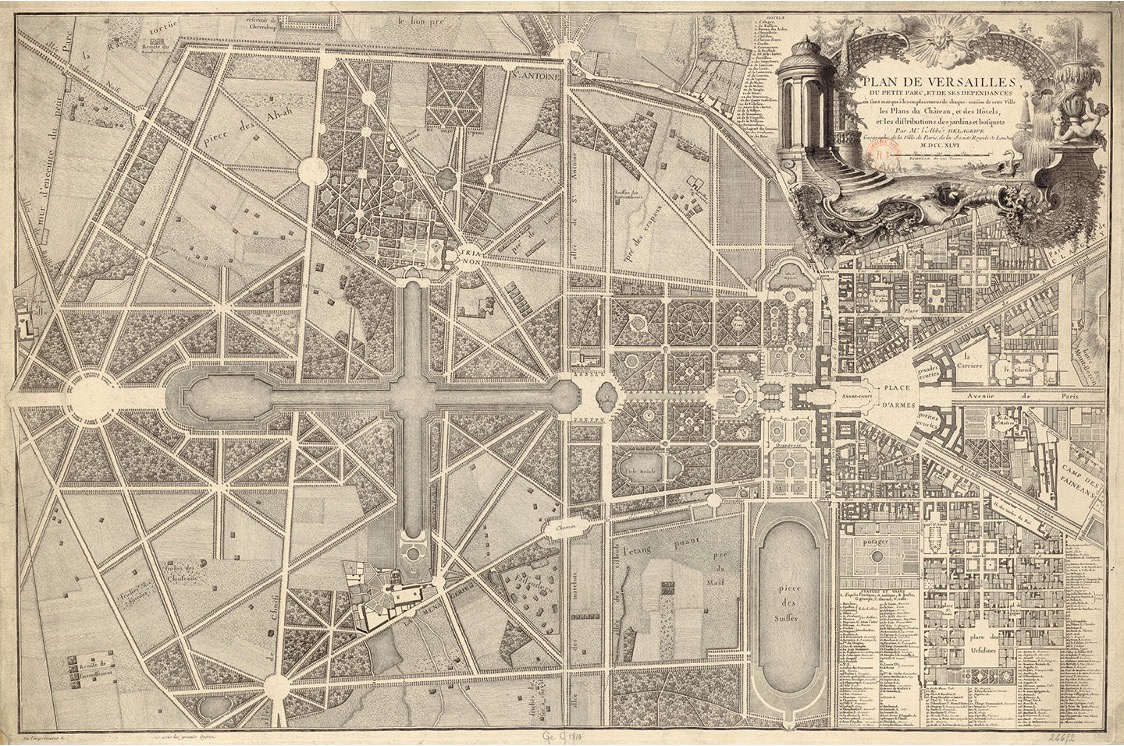
Jean Delagrive, plan of Versailles, 1746, engraving on paper, 24 × 35⅞ in. (61 × 91 cm). Bibliothèque nationale de France, Paris
•Louis XIV’s absolute power was communicated through art (e.g., the transformation of a family hunting lodge into the Baroque palace, Versailles)
•The gardens were designed to impress a sense of order on nature while also featuring dynamic lines and multiuse spaces
•Conveys the idea that the king controlled nature itself
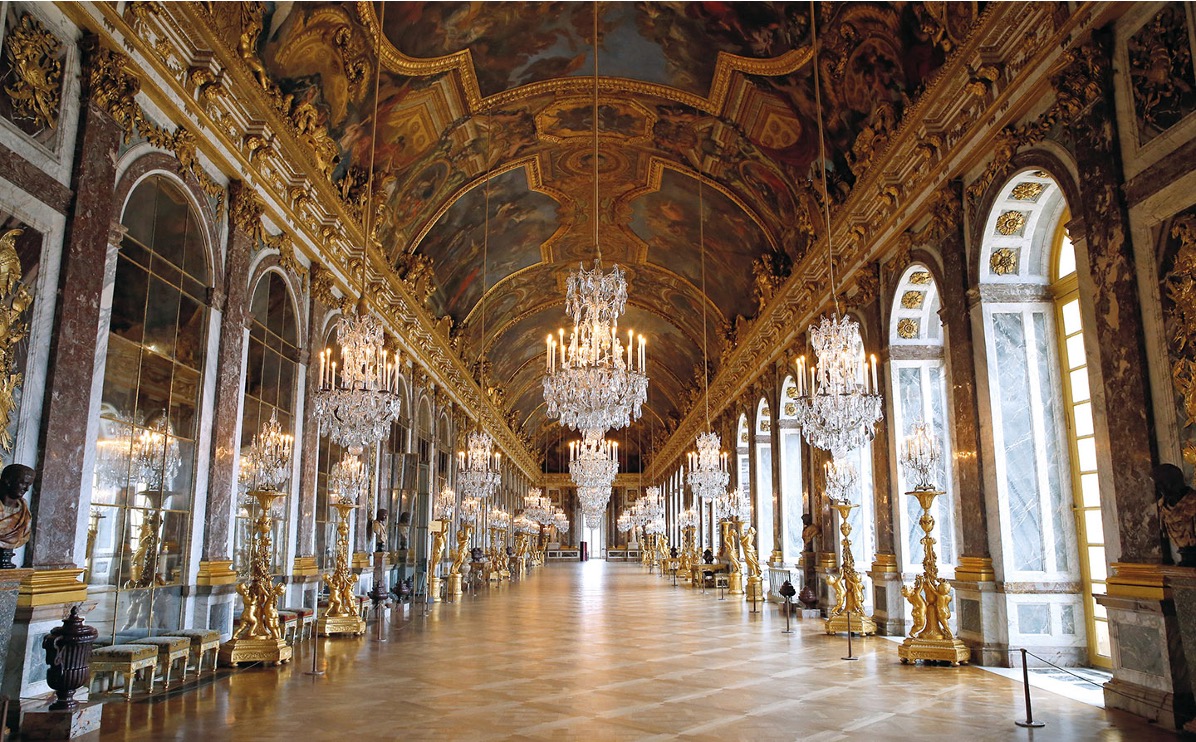
Jules Hardouin-Mansart and Charles Le Brun, Hall of Mirrors, Château of Versailles, France, 1678–84.
•This waiting room and reception hall impressed upon the viewer the absolute control of the king
The extensive use of glass, a costly material that was difficult to transport, demonstrated the power and wealth of the king and France
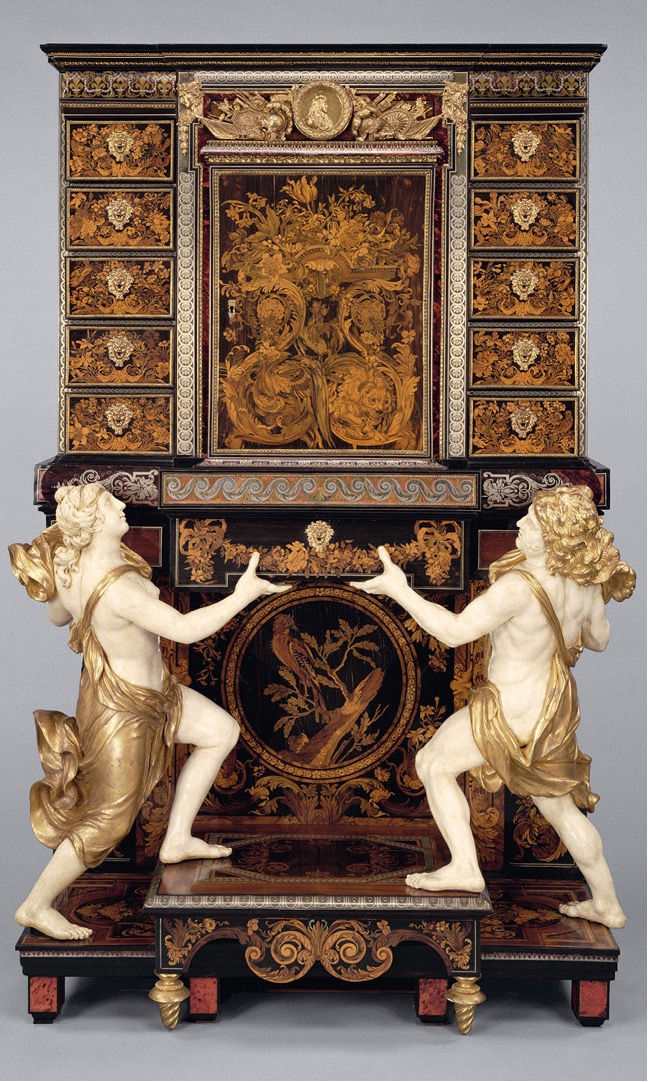
André-Charles Boulle, Cabinet on Stand, c. 1675–80. Oakveneered with pewter, brass, tortoiseshell, horn, ebony, ivory, and wood marquetry; bronze mounts; figures of painted and gilded oak; drawers of snakewood, 7 ft. 6½ in. × 5 ft. 9½ in. × 26¼ in. (2.3 m × 1.77 m × 66.7 cm). J. Paul Getty Museum, Los Angeles, California
•This cabinet celebrates France’s victory in the Franco-Dutch War
•The white-painted and gilded figures of Herakles reference martial strength and peaceful resolution of conflict
•The imagery on the cabinet doors professes victory over all of Europe